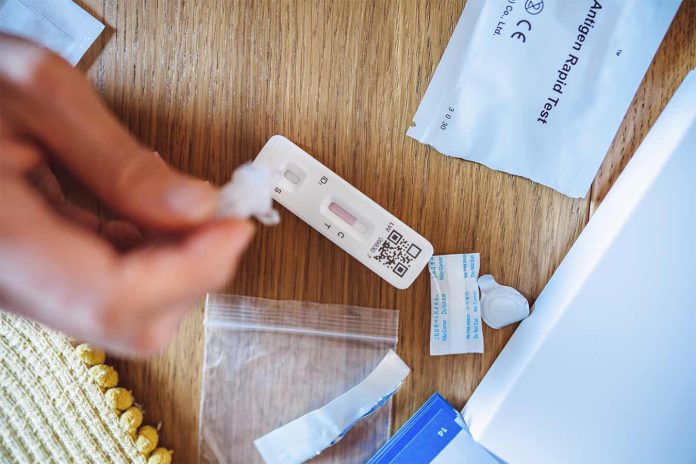The Department of Health and Human Services (HHS) has announced the resumption of the availability of free COVID tests for Americans. The COVIDTests.gov website, set to reopen on September 25, will allow each household to receive four free COVID tests via the United States Postal Service. This marks the fifth round of free tests provided since the pandemic began, with over 755 million tests already distributed by the HHS’s Administration for Strategic Preparedness and Response.
These tests are a valuable resource for individuals to quickly determine their infection status and take appropriate precautions. The HHS has also revealed a significant investment of $600 million across 12 COVID test manufacturers, which is expected to yield around 200 million new over-the-counter COVID tests to replenish government supplies and enhance testing capabilities.
The investment aims to enhance the country’s preparedness for future pandemic-related challenges and strengthen domestic testing production capabilities, as stated by the HHS.
This announcement comes at a time when COVID hospitalizations and fatalities are increasing, with hospitalizations exceeding 20,000 for the week of September 9, a level not seen since early March 2023.
Accessing the latest round of free COVID tests will involve visiting the COVIDTests.gov website, which will be live from Monday. The process is expected to be similar to previous rounds, typically requiring a valid U.S. address, with packages being shipped within seven to 12 days. These new tests will be effective in detecting currently circulating COVID variants, including EG.5, and will remain valid through the end of 2023. Instructions on checking for extended expiration dates will also be provided.
Each household, regardless of financial status, will have access to four tests. Additionally, individuals can explore other options for low- or no-cost COVID tests through HRSA health centers, Test to Treat sites, or ICATT locations. It’s important to note that since the expiration of the COVID-19 Public Health Emergency in May, Medicare no longer covers over-the-counter COVID tests, and private insurance providers are no longer mandated to do so.
While free COVID tests are a valuable tool, they alone may not completely control the spread of COVID during the fall and winter. However, if utilized effectively, they can be beneficial. One significant aspect of the COVIDTests.gov program is its potential to address health inequities and disparities exacerbated by the pandemic by ensuring that everyone, regardless of financial circumstances, has access to tests. The program has already distributed over 755 million tests, with a substantial portion reaching underserved communities.
This initiative aligns with the HHS’s broader efforts to provide free COVID tests to various groups, including those in long-term care facilities, senior housing, and the uninsured. Additionally, a new program, the Bridge Access Program, will offer free COVID vaccines to the uninsured or underinsured.
In addition to improving accessibility, correctly used COVID tests can contribute to slowing the spread of the virus by allowing individuals to take precautions upon a positive result. Early diagnosis through testing can lead to more effective COVID antiviral treatments and help differentiate between various respiratory illnesses, which is especially important as flu, RSV, COVID, and other respiratory viruses circulate during the fall and winter.
As the winter months approach, leveraging the free COVID test program, ensuring the functionality of tests, and considering vaccination, including booster shots, are critical steps in managing COVID cases. It’s important to emphasize that while testing is a crucial tool, increasing vaccination rates is equally important in preventing COVID cases and their impact. Testing can diagnose the illness, while masking can help prevent its spread, but ideally, preventing COVID cases through vaccination is the primary goal.
In summary, free COVID tests are a valuable resource in the fight against the pandemic, but they should be used in conjunction with other measures, including vaccination, to effectively manage COVID during the fall and winter seasons.















